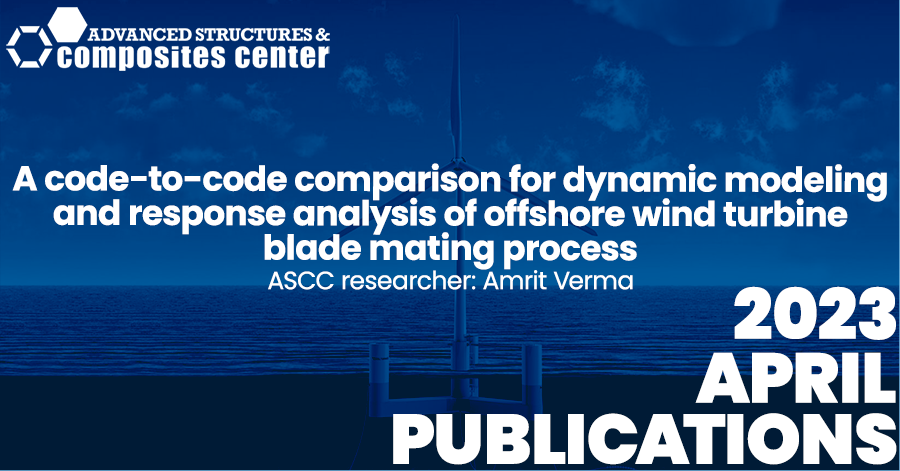
ASCC’s Dr. Amrit Verma published in the Journal of Offshore Mechanics and Arctic Engineering
Orono, Maine – An article authored by ASCC researcher and Assistant Professor of Mechanical Engineering Dr. Amrit Shankar Verma was recently published in Journal of Offshore Mechanics and Arctic Engineering. Titled “A code-to-code comparison for dynamic modeling and response analysis of offshore wind turbine blade mating process”, researchers set out to compare the codes for numerical models of offshore wind turbine blade mating processes using a crane developed by two widely-used analytical tools, Orcaflex and Sima. Other authors include Saravanan Bhaskaran, Shuai Yuan, Zhiyu Jiang, and Karl Henning Halse.
When installing offshore wind turbine blades, engineers must use the challenging jack-up crane vessel to assist. There are several numerical tools utilized to analyze the wave- and wind-induced motion between the blade root and the hub during the mating process, but researchers point out that “the industry suffers from lack of experiments and full-scale measurements to validate the accuracy of these results.” To solve this, researchers conducted a code-to-code comparison of the numerical model of the offshore wind turbine blade mating process using a jack-up crane vessel in Orcaflex and Sima. Researchers compare the modal and time-domain analyses as well as conducting a comprehensive sensitivity. It was found that both systems are within 5% variation to each other, proving that the Orcaflex model is capable of providing a reasonable estimate and reliable predictions of motion response.
A code-to-code comparison for dynamic modeling and response analysis of offshore wind turbine blade mating process
Authors: Saravanan Bhaskaran, Amrit Shankar Verma, Shuai Yuan, Zhiyu Jiang, Karl Henning Halse
Journal of Offshore Mechanics and Arctic Engineering (2023)
Received 20 June 2022 / Revised 26 December 2022 / Published 12 April 2023
Abstract
Offshore wind turbine blade installation using jack-up crane vessel is a challenging task. Wave- and wind-induced loads on the installation system can cause large relative motion between the blade root and the hub during the mating process. Currently, several numerical tools are used to analyze such critical global motion responses; however, the industry suffers from lack of experiments and full-scale measurements to validate the accuracy of these results. Consequently, a code-to-code comparison exercise becomes critical as it allows comparing different numerical tools for reliable prediction and verification of results. In the present article, a numerical model of the offshore wind turbine blade mating process using a jack-up crane vessel is developed in ORCAFLEX, and a code-to-code comparison is performed against SIMA; both these tools are immensely used in the industry for modeling marine operations. Different comparisons are made between both the tools such as: (1) modal analyses of the jack-up vessel and the blade lifting gear, (2) time-domain analysis of the fully coupled installation vessel-crane-blade system, and (3) a comprehensive sensitivity study based on different seed numbers and simulation periods. The results of the study show a good agreement between both the tools with a deviation of less than 3% in terms of modal analysis and less than 5% variation in time domain results. Further, the article provides modeling guidelines for the industry practitioners that heavily rely on both the tools for modeling marine operations.
Keywords: Dynamics of structures, Ocean energy technology, Offshore safety and reliability, Reliability of offshore structures and pipelines, Structural safety and risk analysis
Contact: Grace Bradley, grace.a.bradley@maine.edu
